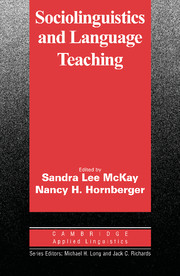Book contents
6 - Pidgins and creoles
Published online by Cambridge University Press: 22 July 2009
Summary
He gon catch we back!
Huh?
He gon catch us again!
This striking exchange took place some twenty years ago, between an 11-year-old African-American boy and me as we were driving down a four-lane highway along Waccamaw Neck in coastal South Carolina. I was passing a big four-wheeler as it was gathering speed on a straight road, and my young passenger was commenting on the futility of that attempt – first in his native creole and then in a variety closer to mine. Born about 20 miles and 20 years apart along this coast, we had learned very different language varieties in our home communities. Now, working together daily in his newly integrated local school and goofing off that day on a fishing trip, we were learning to accommodate to each other's language patterns. But, as this brief exchange makes clear, the child was doing the major share of the accommodating. When my “Huh?” indicated a lack of understanding, he could make substitutions for two words in his native creole, known as Gullah, that moved his variety closer to my standard English. Having worked for 2 months as a classroom aide and researcher in his school, I was able to understand his use of gon as an auxiliary marker for future and his extension of the standard meaning of catch, so that I could then translate his observation to something like: “He [the truck driver] is going to pass us again.”
- Type
- Chapter
- Information
- Sociolinguistics and Language Teaching , pp. 195 - 217Publisher: Cambridge University PressPrint publication year: 1995
- 1
- Cited by

